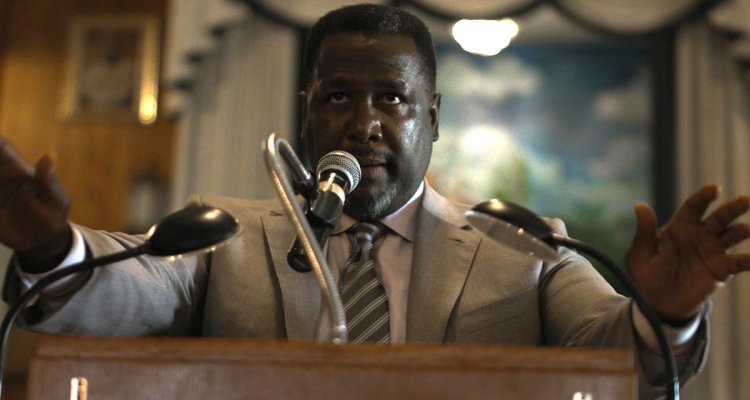“Burning Cane” is a film of contradictions. It’s made by a shockingly young director (now 19, Philip Youmans was 17 when this was shot), but with an aesthetic and themes that look to the past, exploring the old school conception of faith and family that saturate this rural Louisiana community. It’s a film more lyrical than narrative, with little action in many scenes, yet one that builds to a climactic act of violence all the more shocking for occurring in such a slow, somber story. It’s a film with powerful performances and narration (and one that won three major awards at the Tribeca Film Festival last week including the top Best Narrative feature prize), yet one that ultimately keeps character’s interiority at arm’s length. The result of these contradictions is sometimes uneven, but also very evocative and original, an intriguing debut for Youmans.
READ MORE: The 100 Most Anticipated Films Of 2019
“Burning Cane” begins with Helen (Karen Kaia Livers) narrating the many home remedies she’s tried to cure her mangy dog; an unusual beginning but one that quickly helps locate the setting and her dutiful personality. A widow, Helen spends much of her time checking up on a pair of alcoholics. First, there’s her pastor, Reverend Tillman (Wendell Pierce, Bunk from “The Wire”), who can still give a good sermon but away from the pulpit has lost his wife and taken to drinking and driving. Even more lost is Helen’s son Daniel (Dominique McClellan), who is in the process of losing his wife in a haze of drinking, unemployment, and abuse. Daniel’s troubles are even more heartrending because his young son Jeremiah is present, silently being shaped by what he sees.
READ MORE: Tribeca Film Festival: 15 Must-See Movies
Youmans has a way of obscuring the action of the film, only letting the audience see and hear from oblique angles. This approach will alienate many, and sometimes he takes it too far, literally shrouding characters in the frame, but overall this restraint gives the film a beguiling quality of currents flowing beneath a placid surface. The overall feel of the film is that of a languid summer night, with the sound of a distant radio barely audible over the insect noise and hot, heavy air. With its roving, handheld camerawork, some have already compared “Burning Cane” to Terrence Malick, the go-to comparison for any oblique visual style, but Malick uses his free-floating camera and very personalized, literary-influenced narration to give voice to thoughts too personal to be said aloud, to allow a symbolic kind of flight. Whereas Youmans seems to be burying his characters, showing them enveloped by their surroundings and giving them notably impersonal narration (if anything, more references to Charles Burnett and Lance Hammer‘s “Ballast” should be made). Youmans endows the dialogue with the timeworn quality of received wisdom. He doesn’t seem that interested in individuating the characters as in showing how they are conduits for ideas, feelings, and behaviors that are passed from person to person, and generation to generation.
The strengths of “Burning Cane” are often also its weaknesses. Some scenes are given a mystery and power by their tangential relation to the whole, while some just feel like wheels spinning in a barely feature-length film. The restraint with which Youmans characterizes is refreshing, but the performances can also feel diminished by inscrutable elements, whether that’s missing narrative context or simply parts of scenes that are simply hard to see or hear entirely. Still, “Burning Cane” would be an impressive debut at any age, showing a distinct style, a suggestive eye for setting and detail, and an admirable willingness to experiment. [B]
Follow along with all our coverage from the 2019 Tribeca Film Festival here.

